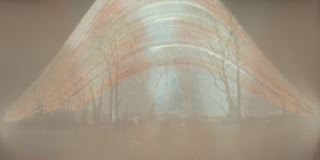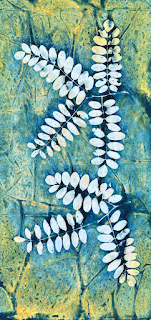In my ongoing efforts to look at the world through an alternative lens, I've discovered film souping, and it's tremendous fun to play around with.
Basically, after shooting a roll of 35mm film, you "soup" it by soaking it for several hours in a solution of water and an additional substance, generally common household stuff. You then allow it to dry out, thoroughly, and get it developed. You can't just send it off to a regular developer, as it will contaminate their chemicals, you need someone who specializes in film soup. I used
Film Lab 135 and am very happy with the service and with all the helpful info they post online.
This batch of photos is from a roll of Fuji film 200 in my Minolta Maxxum 50 camera. This is not a particularly sexy vintage camera; I bought it back when I needed to provide slides of my artquilts in order to enter quilt exhibitions. But it is reliable and easy to use so was a good baseline for me for this project.
I souped this roll in a cup of hot green tea overnight, then dried it over time on the mantle of my gas log fireplace.
As you might predict from my love of the wet cyanotype process and the way colors shift and alter in those prints, I am in awe and so in love with how these turned out. I think it's a function of the hot water combined with the slight alkalinity of the tea, and the randomness of where the solution penetrated into the roll. So, just as with wet cyan, it's a combination of deliberate action and serendipity.
There were some duds on the roll, of course, but I learned a lot about what types of subjects to focus on and what to expect. It's definitely worthy of future experimentation.
I think of my fiber work as my vocation, and this type of photography as an avocation, but that line is getting blurred.
Pick your platform to find and follow my content, and as always, thanks for reading!




























































